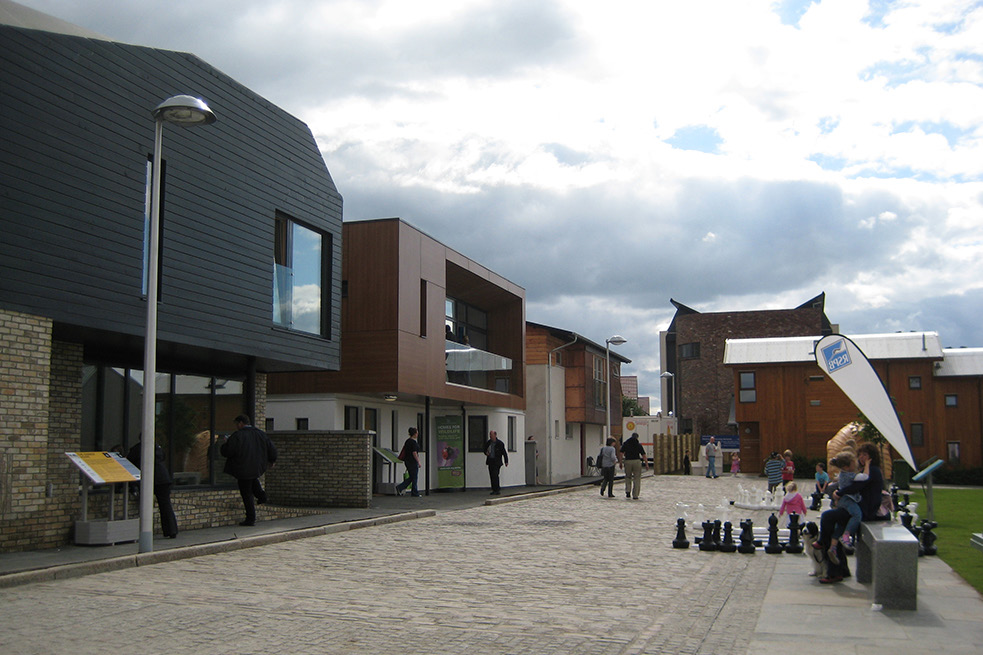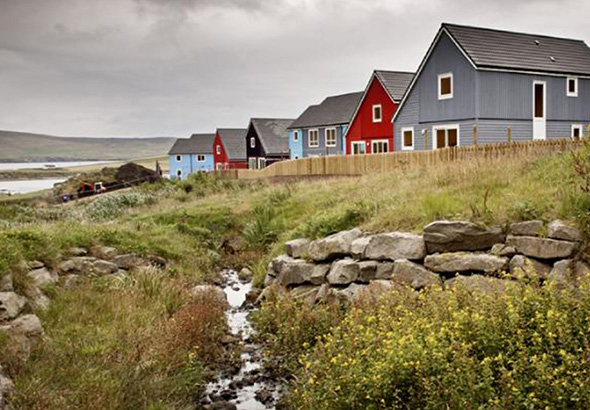Housing typology: edge
Learn about edge housing and its roles.

This piece explores edge housing through built examples.
Illustrated by mapping, photography and scale drawings, our aim is to show the link between design of the house and the place of which it forms a part.
The case study:
- defines edge housing
- looks at its various roles
- explores built examples in Lerwick, Johnstone and Inverness
What is edge housing?
This housing typology forms edges to parks, public open space and the wider landscape.
Roles of edge housing
The success of edge housing can be attributed to the useful roles this typology plays. For example, edge housing:
- boosts its value with views over parkland
- helps make public open space visually attractive and well-used
- facilitates walking, cycling and healthy lifestyles

Grodians, Lerwick
Buildings composed to make an informal but considered edge to the adjoining landscape. Such edges are often screened from the landscape using trees but in this case another solution has been reached with the local planning authority. Find other examples in the full case study, linked below.
Image credit: Richard Gibson Architects
Header image credit: AREA
Explore more housing typologies
Our housing typology series illustrates where designers have sought to reconcile contemporary living with the wider roles of the individual house integral to placemaking. Through built examples, from East Ayrshire to the Shetland Islands, we explore the terrace, topographic and climate responses, adaptables, and more.
